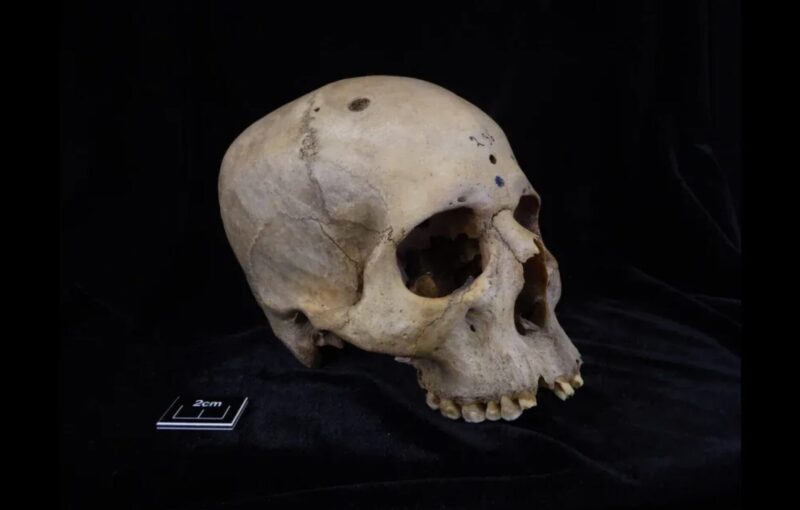Cancer is rarely discussed in connection with ancient cultures. It is usually seen as a more recent disease. A skull that dates back 4,000 years is changing that. The ancient Egyptian skull shows signs of both cancer and cancer-treating surgery.
Texts from the period suggest that the ancient Egyptians recognized the condition. Archaeologists have also uncovered several bones from the time that show signs of cancer.
A 2018 study examined six affected bones in an Egyptian cemetery that dated between 1,500 and 3,000 years ago. Two women had cervical cancer, one man had testicular cancer, another had colorectal cancer, an older woman had metastatic carcinoma, and a toddler suffered from leukemia. The new study is the first physical evidence that ancient Egyptians may have tried to treat the disease surgically.
The skull has been part of the Duckworth Laboratory collection at Cambridge University since the mid-19th century. In 1963, Calvin Wells noted that it contained a number of lesions. It is one of the oldest examples of malignant tumors in the ancient world. Wells suspected the man had cancer of the upper throat. Only on recent closer inspection did researchers discover that the skull showed both more evidence of cancer and signs of surgery.

Images of the cut marks close to the lesions: (1) images showing the location of the lesions with cut marks; depth of lesion 1; cut marks of lesion 1 (a and b). (2) images showing the second lesion with evidence of cut marks. Photo: Tondini, Isidro, Camaros, 2024
Treatment or autopsy?
The skull belonged to a man aged between 30 and 35 years old. CT scans showed that the lesions identified by Wells were consistent with malignancy. They also identified 30 smaller regions around the site, suggesting the disease had started to spread.
The most interesting discovery was the presence of cut marks around the site where the tumor had been.
“It was the very first time that humanity was dealing surgically with what we nowadays call cancer,” said Dr. Edgard Camaros, co-author of the new study, told CNN.
The team suspects that the surgery took place shortly before the patient died because there is no evidence of the skull healing. However, they can’t be sure.
“If those cut marks were done with that person alive, we’re talking about some kind of treatment directly related to the cancer,” Camaros said.
If the surgery happened after the patient died, it shows that healers were doing an autopsy to learn more about the condition.
“It’s amazing to think that they performed a surgical intervention,” he said. “But we cannot actually distinguish between a treatment and an autopsy.”






